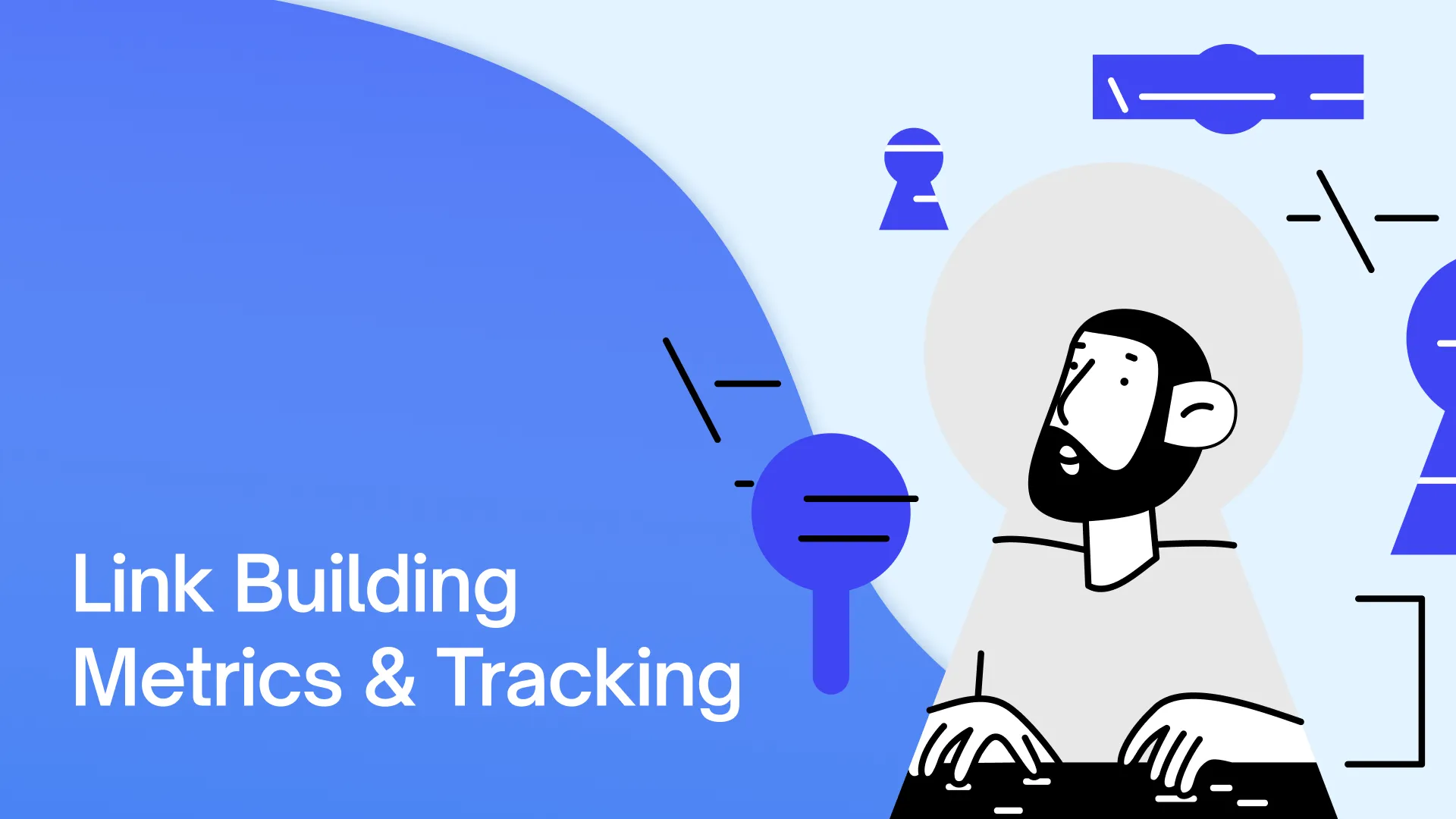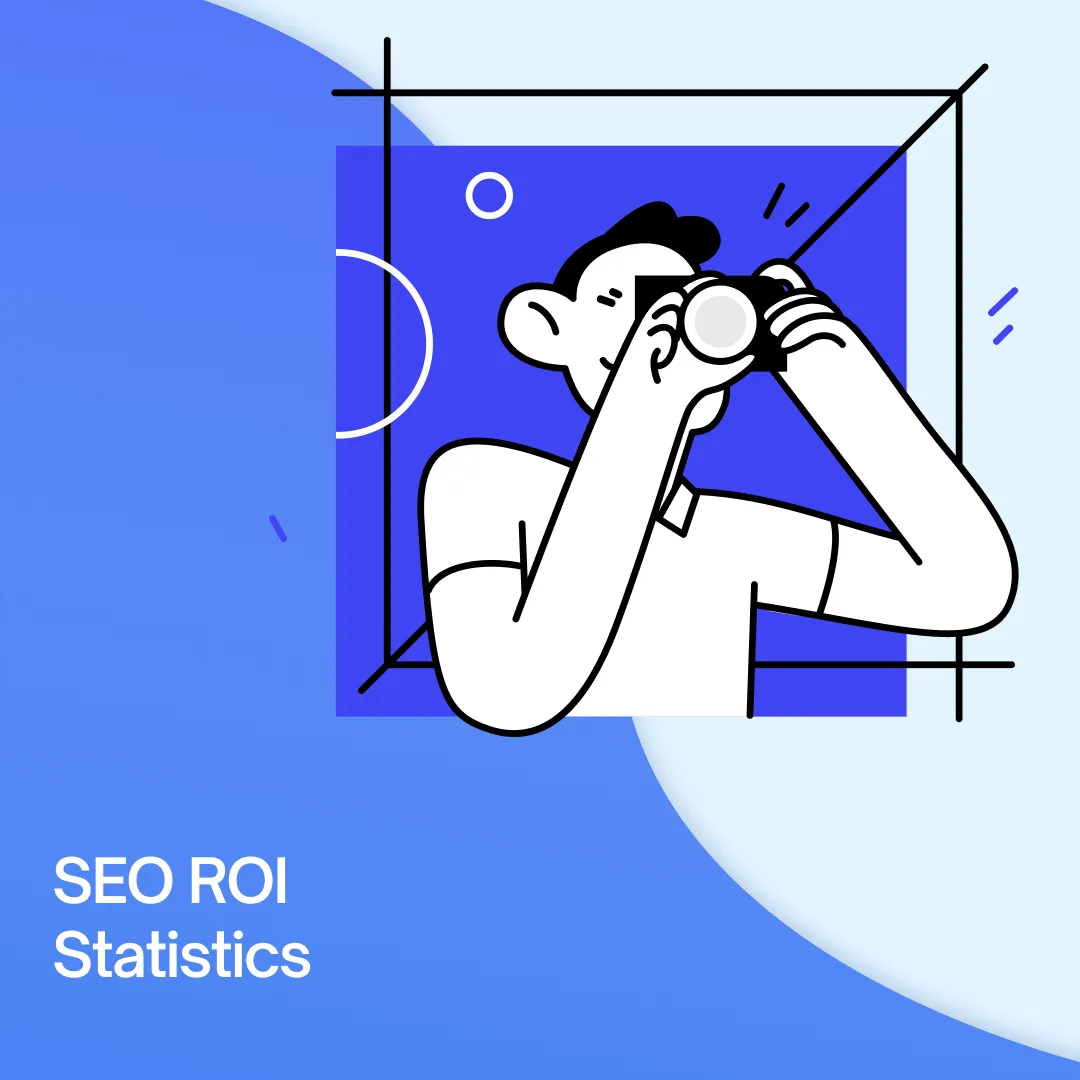At Bluethings, we don’t do cookie-cutter SEO. Every client has unique goals, and we focus on the link-building metrics and SEO KPIs that truly drive growth.
We always optimize your link-building strategy, from anchor text distribution to performance tracking, to scale results measurably.
Take Meridian Compensation Partners, for example.
We unlocked 773 new strategic keywords in six months. We also lifted their Domain Rating (DR) from 40 to 43. That’s a 7.5% boost in site authority and a clear demonstration of both link equity and link juice in action.
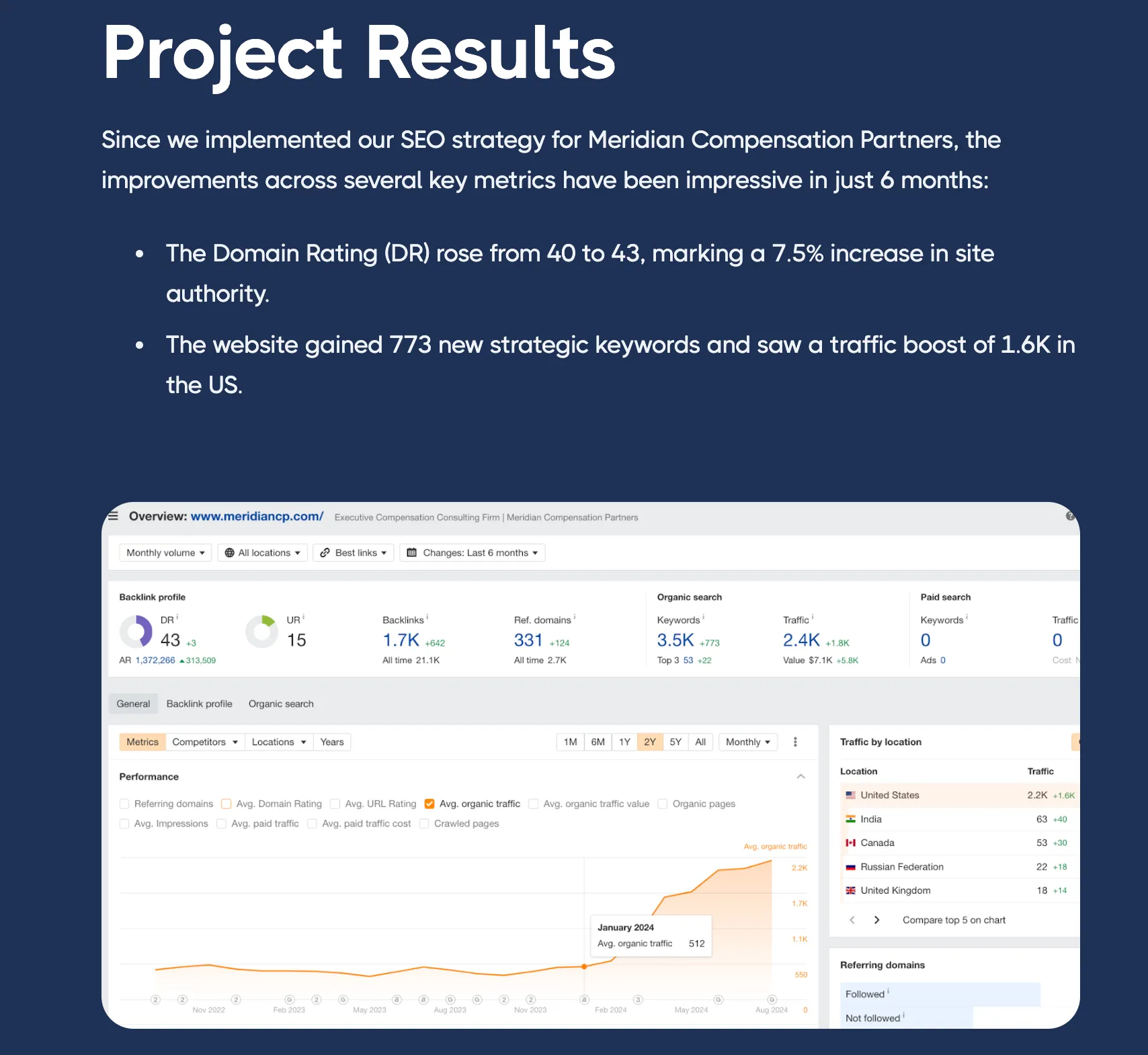
Or iWave. Their organic traffic tripled from 6K to 18K in under half a year using a smart mix of link building strategy, brand awareness, and tracking link building in GA4 and Google Search Console.
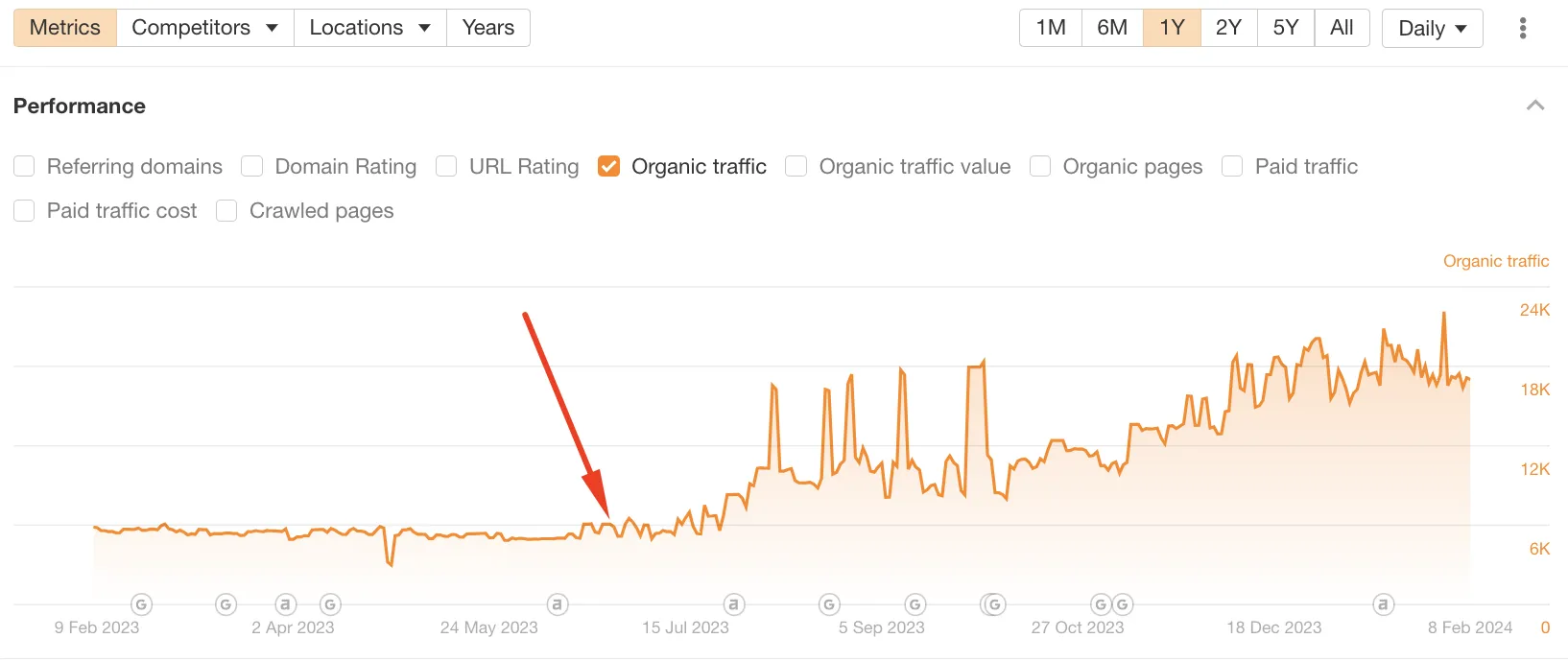
Different goals need different SEO KPIs.
That’s why our link-building agency tracks metrics that matter, like visibility, qualified traffic, and customer engagement. We also maintain a natural balance of dofollow and nofollow links to protect long-term credibility. We do not focus on vanity stats that look good but deliver nothing.
Pro tip: Use a GA4 custom dashboard to monitor referral traffic and keyword rankings for your linked pages. It keeps tools like Screaming Frog aligned with search engines and web analytics so you see exactly where links drive ROI.
This article breaks down the link-building KPIs we use in 2025. These KPIs are the ones that deliver measurable, repeatable growth and help build a healthy backlink profile.
TL;DR
- Bluethings focuses on measurable SEO growth through link building that ties directly to business KPIs.
- Success stories include Meridian Compensation Partners unlocking 773 new keywords and iWave tripling organic traffic in six months.
- Link quality, topical relevance, and user engagement are prioritized over vanity numbers like raw link counts.
- Core metrics tracked: backlink quality, anchor text distribution, keyword rankings, referral traffic, organic traffic growth, and domain authority signals.
- Tools used include Ahrefs, Semrush, Moz, Majestic, GA4, Google Search Console, and Looker Studio for cross-checked reporting.
- Balanced follow vs nofollow ratios and diverse referring domains are key to maintaining long-term authority.
- AI-driven search shifts value toward context, trust signals, unlinked brand mentions, and placements in content formats AI can parse.
- Strategy emphasizes building links to both money pages and blog posts, depending on intent and ranking opportunities.
- Results typically appear within 1-3 months for medium competition keywords and 3-6 months for competitive terms.
What Are Link-Building Metrics?
When we talk about link-building metrics, we mean the numbers that show whether your backlinks are actually boosting SEO on search engines, not just inflating a “links gained” stat.
At Bluethings, we go beyond counting links.
We measure how they affect traffic, authority, and user engagement. That’s why our link-building agency uses a structured evaluation process that connects directly to SEO KPIs, including Moz Spam Score, Majestic Trust Flow, and SEMrush Toxic Score for a complete view of quality.
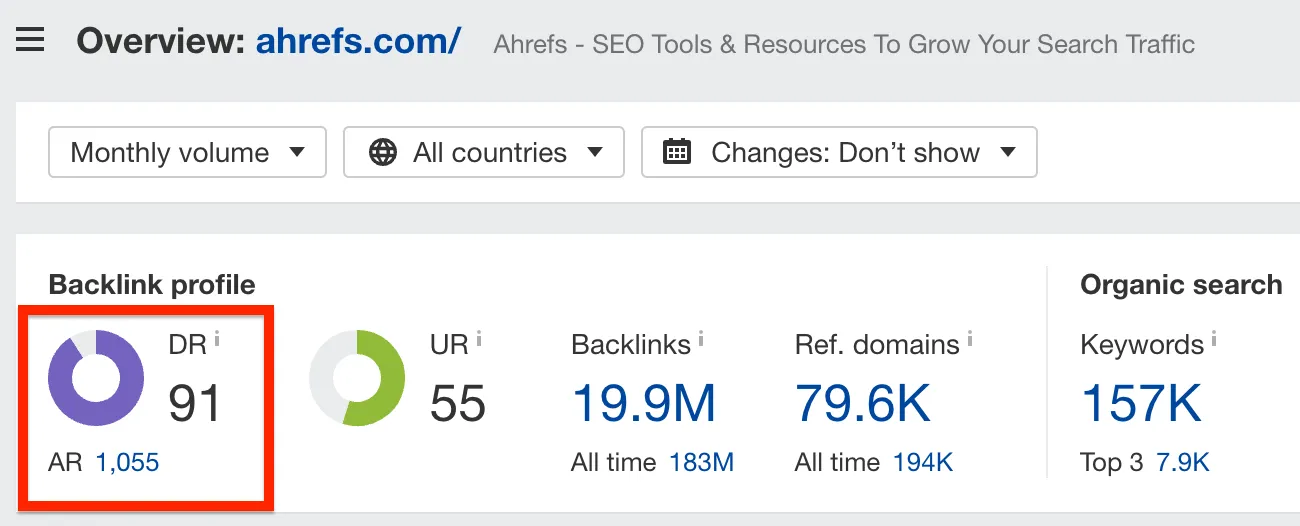
Before any link-building outreach, our link-building agency runs a potential partner website through a four-point evaluation process:
- Domain rating (DR): We aim for DR 60+ but consider slightly lower scores if the site is highly relevant.
- Organic traffic volume & trends: Using Ahrefs, we check for at least 3,000 monthly visitors and review traffic distribution so it’s not concentrated on a single page.
- Topical relevance: A DR 50 site in your niche beats a DR 75 site in an unrelated industry every time.
- Backlink profile: We avoid sites overloaded with outbound links or tied to spammy industries like casino or crypto scams, as these can increase spam scores.
This structured approach ensures we only build links on credible, relevant, and high-quality platforms with a healthy backlink profile.
“One of the biggest misconceptions clients have about link building is expecting immediate results, like a sudden spike in rankings or traffic right after a link goes live. In reality, link building is a long-term SEO investment, not a quick fix.” (Snizhana Kolomiets, Link-Building Lead, Bluethings)
Watch this quick explainer from Ahrefs on what makes a backlink truly valuable. It covers authority, relevance, and trust signals that align perfectly with the metrics we track at Bluethings, helping us avoid low-quality site placements.
Why Are Link Building Metrics Important?
SEO in 2025 isn’t what it used to be. AI search, zero-click results, and user intent have changed the game. Here’s why the right link-building KPIs and SEO KPIs matter more than ever:
1. AI Is Changing Everything
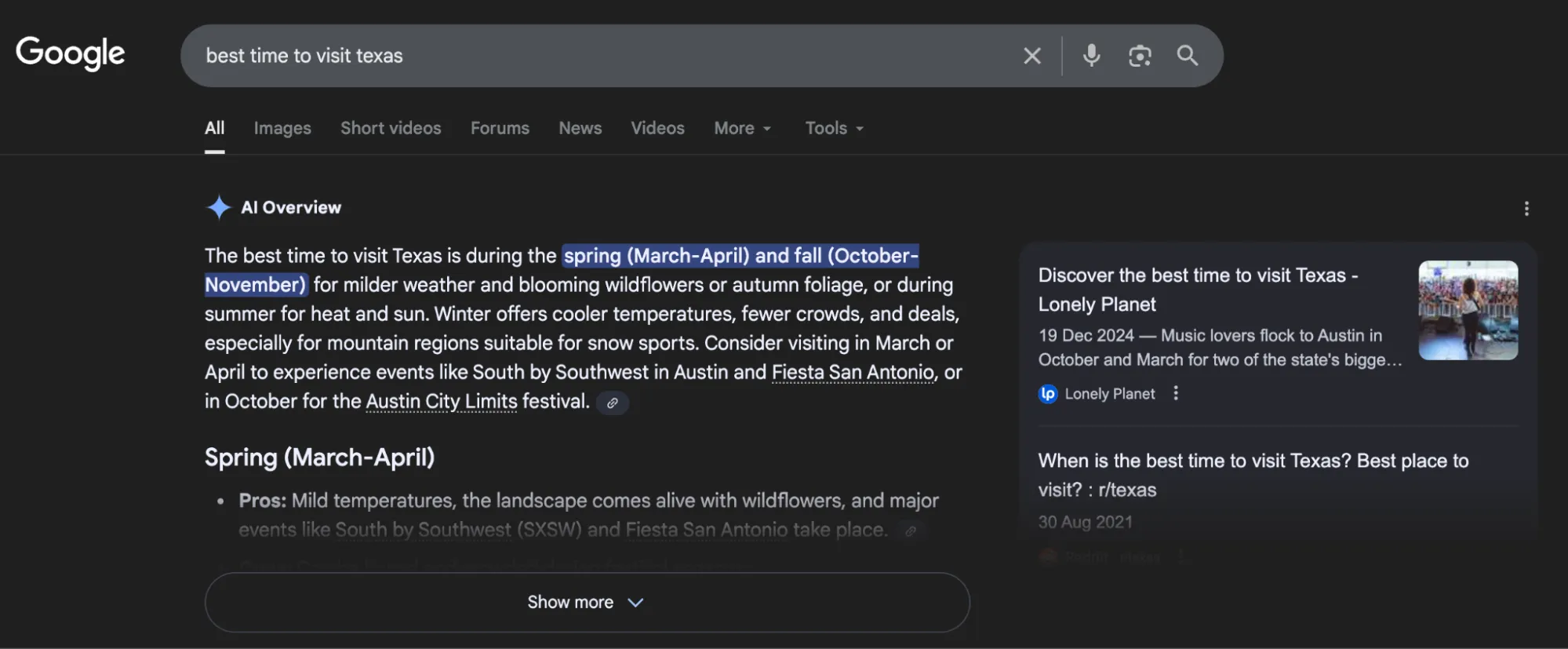
Google’s AI Overviews and AI Mode dominate search engine results. Impressions are up 49% year-over-year, but click-through rates have dropped by 30% because users can easily get answers without leaving the SERPs.
That shift makes tracking your link-building efforts more critical than ever. In an AI-driven search era, it’s not enough to just earn backlinks. You need to understand whether they’re still delivering visibility and authority.
At the same time, links themselves are evolving.
They now need to drive real user engagement or appear in AI-cited sources to stay valuable. Even unlinked brand mentions can influence what AI systems feature, since context and authority signals matter as much as raw link counts.
This is why platforms like Reddit and Quora are gaining weight. Their organic, authentic discussions often surface in AI responses, turning them into powerful sources of link equity.
2. Quality Beats Quantity Every Time
Many people still assume Domain Rating is the ultimate goal. It’s not.
Contextual, authoritative backlinks now outweigh sheer link volume. Search engines value relevancy and trust signals over third-party metrics like DA/DR.
The problem is, 95% of pages get no backlinks at all. Of the rest, only 2.2% earn meaningful links.
As our Link Building Lead, Snizhana Kolomiets, our simple quality-focused strategy helps you avoid this issue:
“A high DR link from an irrelevant site won’t help. It might even hurt your rankings. Consistent, high-quality, and contextually relevant backlinks outperform raw volume every time.” (Snizhana Kolomiets, Link Building Lead at Bluethings)
We’ve seen this firsthand: nine backlinks to WebTonic’s homepage pushed branded keywords into the Top 3:
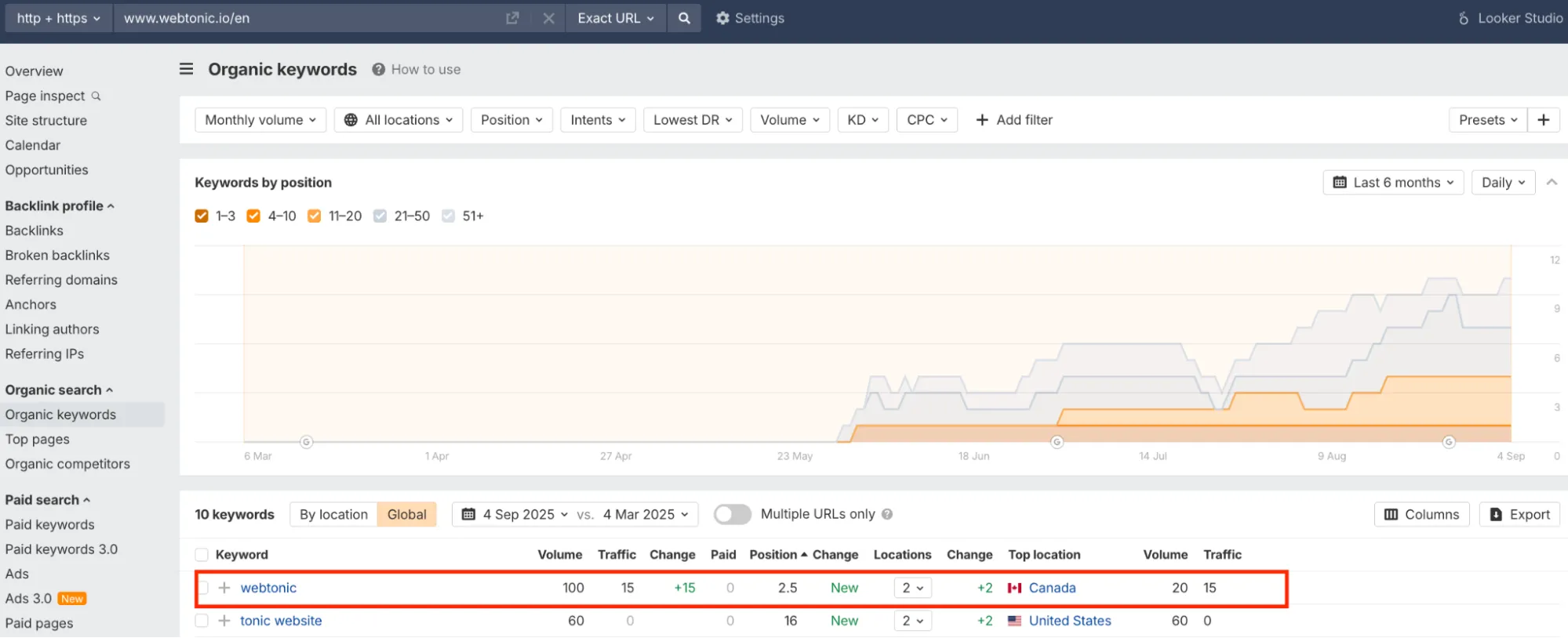
Similarly, four targeted links took “radiology staffing” from zero visibility to Position #2 in U.S. search results for Alpha Apex Group Health.
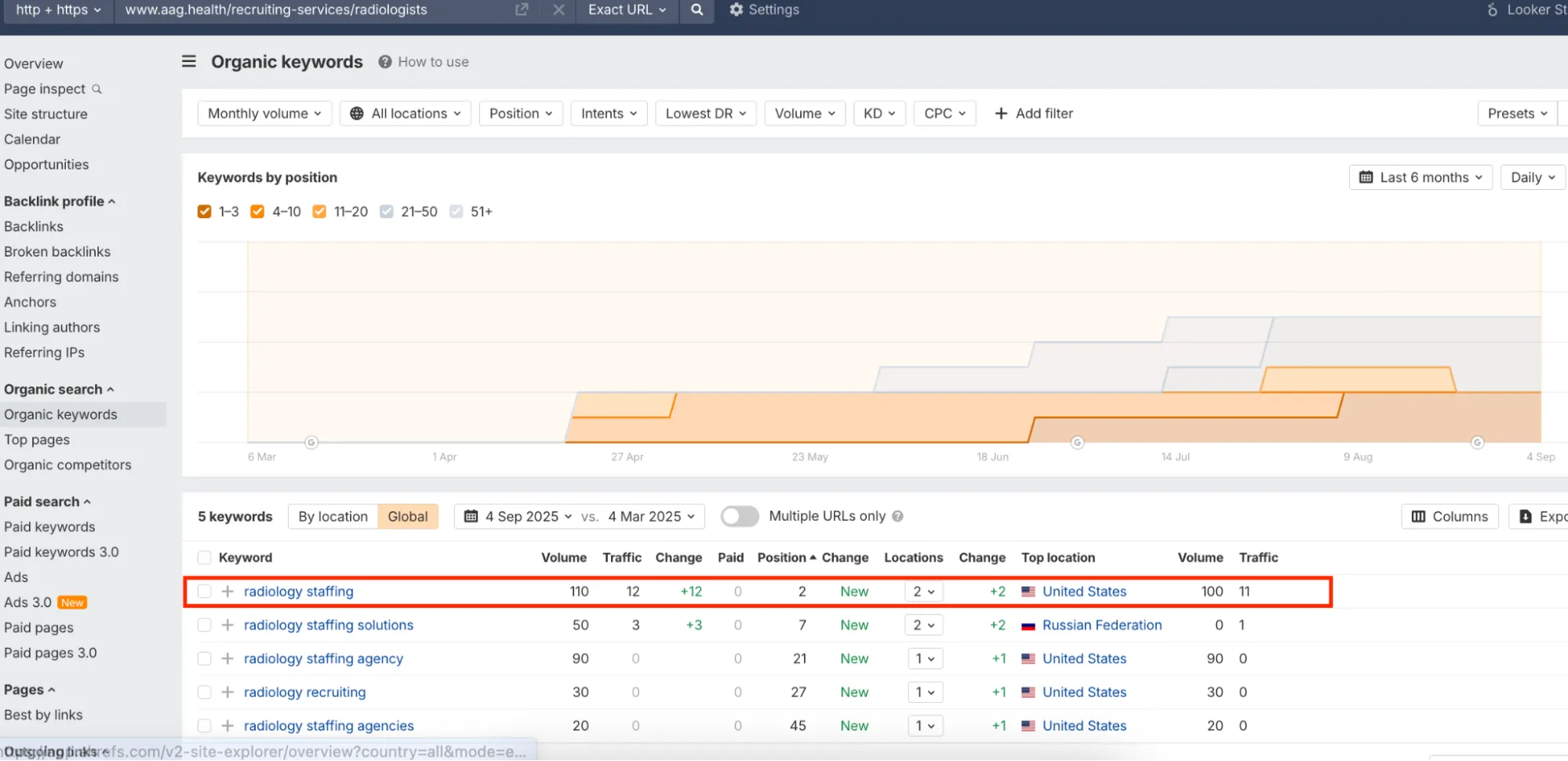
That’s why our link-building strategy always prioritizes trust and topical authority with a focus on healthy backlink profile practices.
3. Intent and Experience Now Drive SEO
Today, search engines factor in user intent, context, and engagement signals alongside traditional SEO metrics. That’s why we look at both GA4 traffic data and Ahrefs info to ensure our link-building metrics tie back to conversions and high-impact SEO KPIs while avoiding low-quality site placements.
Bottom line: AI now curates search results, backlinks face closer scrutiny, and user intent plus trust beats link volume. That’s why KPIs focused on quality, relevance, and engagement are essential in 2025.
Key Link Building Metrics We Follow at Bluethings
When it comes to link building KPIs, we keep things simple: track the metrics that move SEO performance on search engines, not vanity numbers.
At Bluethings, our link-building team looks at:
- Backlink quantity and quality from credible external sites
- Anchor text distribution and diversity to prevent over-optimization penalties
- Keyword rankings for the pages we’re linking to, including insights from Google Search Console
- Page traffic on those linked pages
- Overall organic traffic growth, link equity flow, and Domain Rating (DR) to evaluate authority signals.
As a side note, here’s how we can see anchor text diversity in Ahrefs:
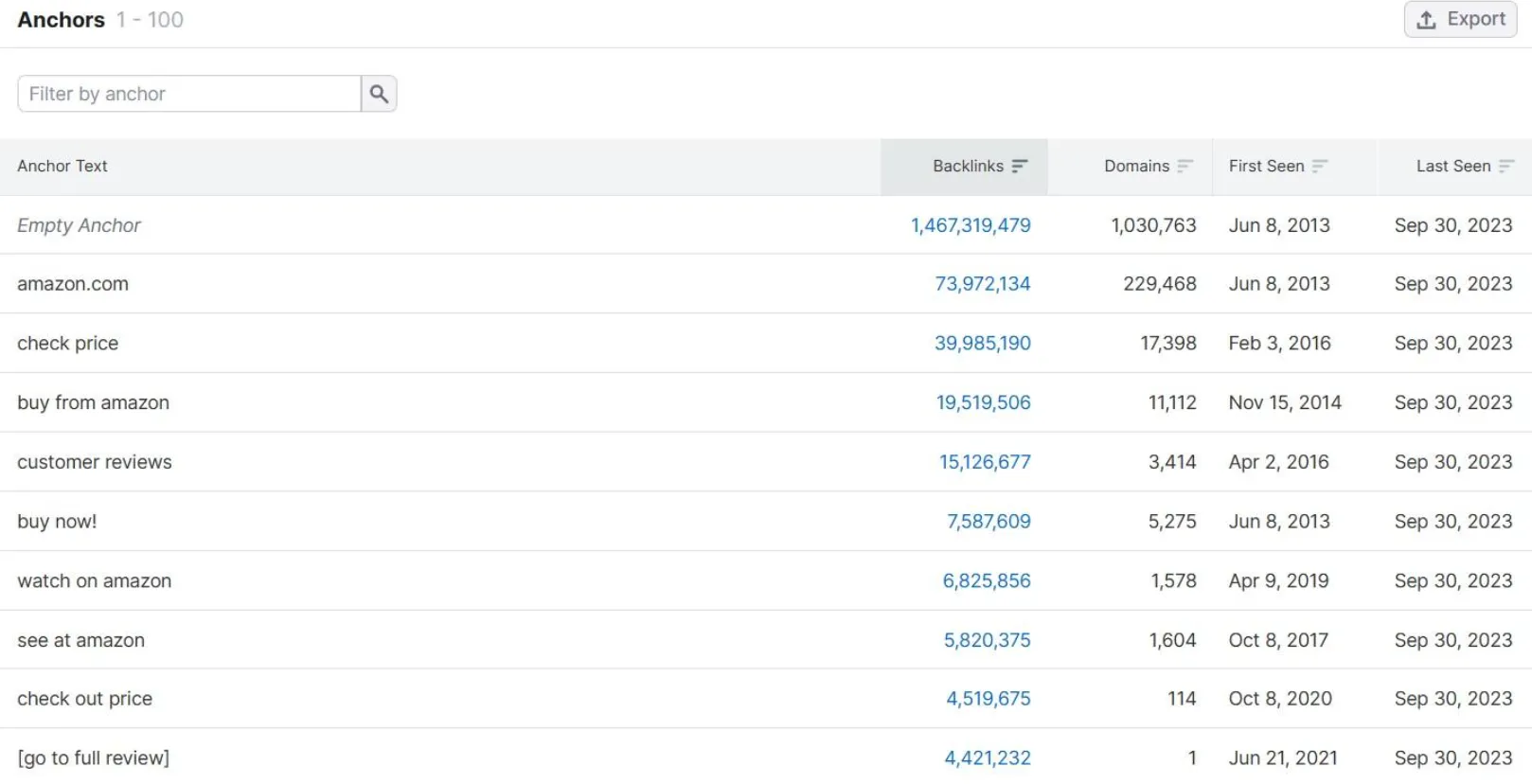
These SEO KPIs and metrics give us a complete picture, from how backlinks affect rankings to how they drive real user engagement.
By combining these metrics with Whois Lookup checks for domain credibility and Wayback Machine reviews for historical trustworthiness, we ensure every backlink supports a healthy backlink profile.
Let’s break them down one by one.
1. Total Backlinks
Total backlinks still matter. But at Bluethings, we favor the number of total contextual backlinks in guest posts or niche edits because they live inside real content on authoritative pages, surrounded by relevant keywords. These links index quickly, pass strong link juice, and can drive referral traffic alongside rankings on search engines.
Even a handful of high-quality backlinks can set a page apart, especially when they’re earned from trusted sites in your niches.
Yet not all links are created equal.
Search engines emphasize link relevance, authority, and placement within context, favoring backlinks that naturally align with your content and audience – but more on that in a second.
Pro tip: Our link-builders regularly check the links we build to make sure they haven’t been removed, repurposed, or gone toxic. We also check high spam scores using SEMrush Toxic Score to keep a healthy backlink profile.
So, if you’re hiring a link-building agency, you should ask if they follow structured processes for tracking link building. After all, monitoring quality long-term is just as important as the initial placement.
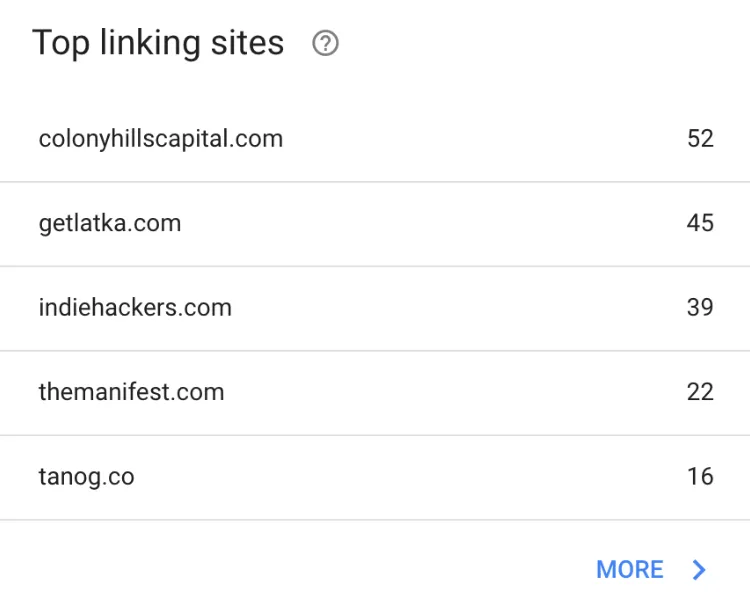
2. Link Relevancy
Relevancy beats raw metrics like DA or DR every time. Google’s focus on EEAT (Experience, Expertise, Authoritativeness, Trustworthiness) and semantic relationships means links work best when they come from sites in the same niche.
Strong link-building metrics are built on topical alignment, not vanity numbers or placements on a low-quality site loaded with irrelevant outgoing links.
A backlink to a fintech brand from a fitness blog? Weak. A link from a finance site with topical authority that passes genuine link equity? That’s SEO gold.
We’ve found that links from sites in or adjacent to our clients’ industries carry far more weight than generic high-DR placements.
That’s why our link-building strategy prioritizes niche publications, digital PR campaigns, and guest posting on external sites with a strong trust history.
Sometimes, you don’t even need a link at all. AI search is now making unlinked brand mentions more important. Our Senior SEO Strategist, Surendren Chetty, explains
“Something else I'm noticing: brand mentions without links are getting picked up more. AI doesn't just look for clickable links anymore. It's scanning for your company name, your products, any mention of your brand across the web. That context helps build authority even without traditional backlinks.” (Surendren Chetty, Senior SEO Strategist, Bluethings)
3. Referring Domains
“The total number of backlinks” refers to every link you’ve ever built.
Referring domains count each unique site linking to you, and search engines value this metric as it signals broader authority and trust.
Fifty backlinks from one domain don’t compare to fifty links from fifty different external sites.
A diverse set of referring domains spreads link equity and passes link juice naturally. That’s why we focus on breadth over repetition for long-term SEO growth.
We check every domain to make sure it adds to a healthy backlink profile rather than inflating vanity metrics.
4. Domain Authority (DA) & Domain Rating (DR)
We use Domain Authority (DA) from Moz and Domain Rating (DR) from Ahrefs as benchmarks for link quality.
But we focus on page metrics, too.
When we pick a page to add your link to, we look at keyword rankings, referral traffic, and conversions.
The website’s DR/ DA alone can be a vanity metric unless tied to business results. For instance, some websites use black-hat SEO tactics to artificially inflate their DR.
Neither metric comes from Google directly. But both offer a predictive score for a site’s ranking power and trustworthiness:
- DA estimates how likely a domain is to rank based on its link profile and the quality of its external sites linking in.
- DR measures the strength of a domain’s backlink profile compared to all others in Ahrefs’ database, factoring in link equity and link juice across referring domains.
Pro tip: Don’t chase only high scores. A smaller, niche site with moderate DR but perfect topical alignment can outperform a high-DR link that’s off-topic. Use Ahrefs’ free website authority checker to analyze your potential link partners before reaching out to them:
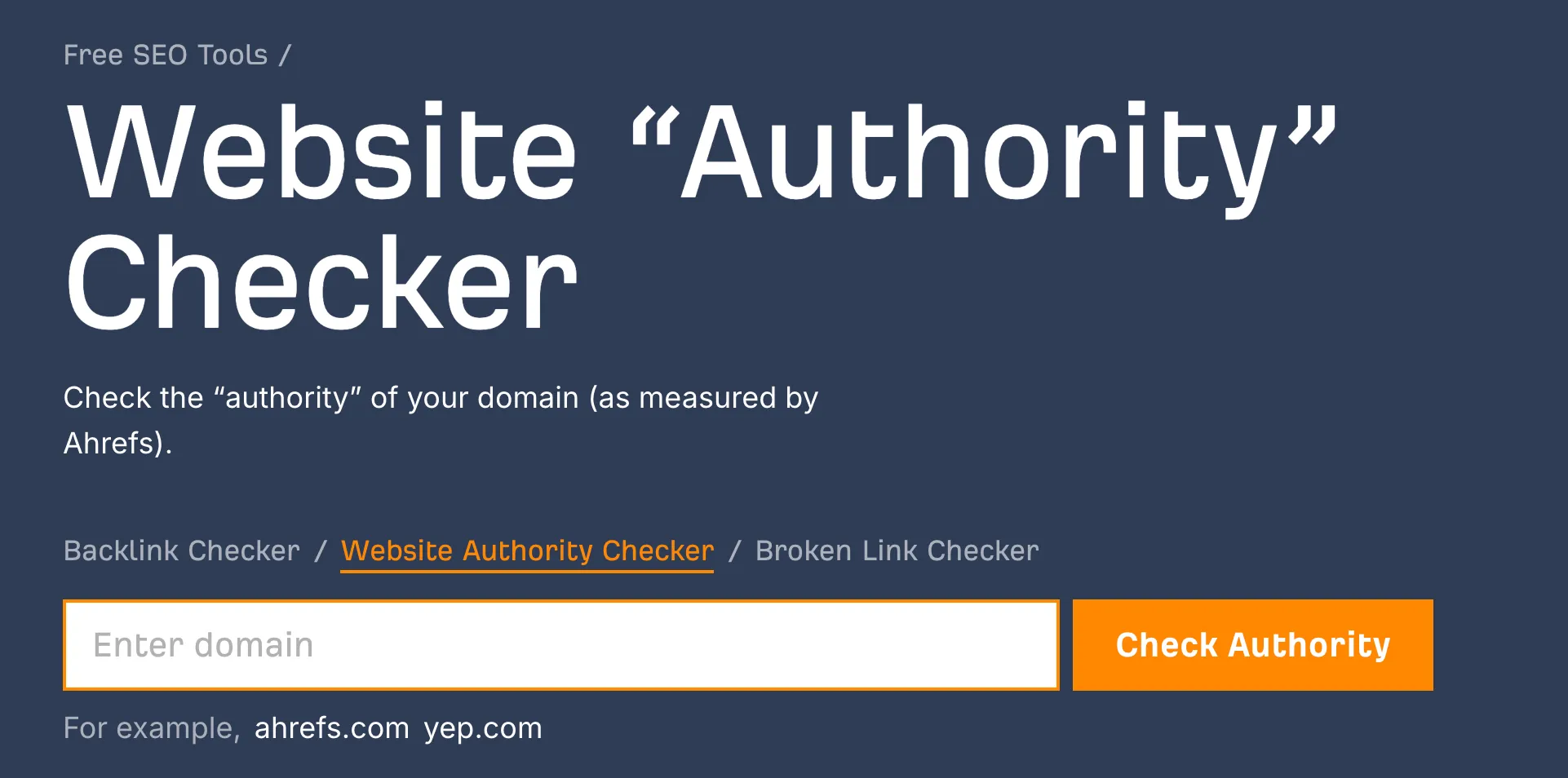
Surprise Bonus Metrics: Page Authority (PA) & URL Rating (UR)
While DA and DR measure domain strength, Page Authority (PA) and URL Rating (UR) zoom in on the specific pages where your backlinks live. And as we explained above, we also cross-check against spam scores to avoid risky placements on a low-quality site.
- PA (Moz): Predicts how likely a specific page is to rank in search engines based on its links and content quality.
- UR (Ahrefs): Measures the strength of a page’s backlink profile directly, including relevance and outgoing links.
A high-DA site may host your link on a weak page with too many outgoing links, reducing value. A page with strong PA or UR ensures your backlink sits where it can actually help rankings and protect long-term authority signals.
At Bluethings, we prioritize backlinks on pages with strong trust signals so our clients build authority while avoiding penalties from over-optimization or poor-quality placements.
5. Anchor Text Distribution
Anchor text tells search engines what the linked page is about. But overdoing exact-match keywords can trigger Google Penguin penalties, raise spam scores, and hurt rankings.
A healthy profile requires a mix of different types of anchor texts, including:
- Branded mentions (e.g., your company name)
- Generic terms (“click here,” “this site”)
- Partial-match anchors (keyword + context)
- Limited exact-match keywords
Snizhana Kolomiets, our link-building lead, adapts this strategy to the new reality of AI search and LLM optimization:
“As AI Overviews pull data from top-ranking pages, it’s clearer than ever that ranking well in organic search is a prerequisite for AI citations, and strong backlinks are what get you there. That’s why we favor link placements within content that AI can easily interpret: listicles, Q&A formats, or structured guides.” (Snizhana Kolomiets, Link Building Lead at Bluethings)
At Bluethings, we understand that anchor text distribution is just the second step. The first step is to choose the right pages to link to.
How do you decide which pages to prioritize for link-building?
Our senior SEO strategist has great insights here:
“First thing I look at? Money pages that actually bring in leads. I mean, this sounds obvious, but you'd be surprised how often people focus on vanity metrics instead of what actually moves the needle for business. If a service page is converting visitors into paying customers, that's where I want those links pointing. But here's where it gets interesting. Sometimes the best opportunities are hiding in plain sight. I'll find pages sitting on page 2 for really good keywords, just waiting for a little push. Could be a money page, could be a blog post. Doesn't matter. If a few quality links can bump it to page 1, that's often my first move.” (Surendren Chetty, Senior SEO Strategist, Bluethings)
6. Follow vs. No-Follow Link Ratio
Backlinks come in two main types: dofollow links and nofollow links.
- Dofollow links pass authority and contribute link equity and link juice that strengthen rankings across search engines.
- Nofollow links don’t pass ranking authority but can drive referral traffic, diversify your anchor text distribution, and boost brand visibility on external sites.
A healthy backlink profile should include both. We aim for a balanced ratio of around 60:40 or 70:30, so link profiles look natural to search engines and avoid red flags like over-optimization or links coming from a directory or low-quality site.
7. Referral Traffic
Referral traffic tracks visitors who come to your website through backlinks. It’s one of the few link-building metrics that shows direct ROI because it measures real users clicking through from your link placements on external sites.
That’s why we monitor referral traffic, session time, and conversions in GA4 and Google Search Console to measure ROI beyond rankings.
And remember: Referral traffic doesn’t always depend on DR.
A fitness blog with moderate authority in your niche might send hundreds of clicks, while a high-DR site could send almost none if it’s irrelevant.
In other words, traffic value depends on niche relevance, the quality of referring domains, and the link equity passed along through diverse outgoing links.
Pro Tip: Set up GA4 alerts for spikes or dips in referral traffic on your most linked pages. Pair with Screaming Frog and PageSpeed Insights to quickly spot whether changes come from backlinks, technical issues, or user behavior shifts.
8. Average Position of Business-Related Keywords
It’s not enough to track every keyword.
Our keyword research team focuses mainly on keywords tied to conversions and revenue, not vanity rankings that don’t improve visibility in search engines. Moving high-value keywords from Page 2 into the Top 3 has the biggest business impact.
However, your strategic link partners may not want to link to BOFU keywords or money pages, because they can perceive these as spammy.
And if they do, the price for getting such a link may double or even triple.
Pro tip: You can focus on linking to TOFU blog posts instead.
Our Head SEO Strategist, Surendren Chetty, explains:
“Sometimes it makes more sense to build links to blog posts first, especially if they're targeting those top-of-funnel keywords. Get people in the door through the blog content, then guide them to your money pages with smart internal linking. Really, it comes down to balancing quick wins against long-term authority building. And being honest about where you actually have a shot at improving rankings. No point chasing impossible keywords when easier opportunities are sitting right there.” (Surendren Chetty, Senior SEO Strategist, Bluethings)
9. Keywords Ranking for Linked Pages
Every backlink should help the specific page it points to rank better in search engines.
That’s why we usually start with low-hanging fruit pages already close to ranking on Page 1.
A handful of targeted backlinks from trusted external sites with clean spam scores and strong link equity can push them into top spots quickly, delivering faster wins for competitive keywords.
And we advise you to monitor whether backlinks are moving pages toward the positions that actually drive traffic and conversions.
Also, keep an eye on outgoing links from your competitor domains, along with metrics like anchor text distribution and nofollow links ratios. A solid competitor analysis reveals gaps in your own backlink profile.
Building links that fill those gaps is how you make sure that each placement strengthens long-term SEO credibility.
Pro tip: We never use directories of low-quality sites for link-building. A good tactic is to use content gap analysis in Ahrefs or Semrush to find competitor-linked pages outranking you. Then run link intersect reports to target the same backlink sources, close ranking gaps, and protect link quality by cross-checking metrics like Moz Spam Score or Majestic Trust Flow.
10. Organic Traffic to Linked Pages
Finally, we track organic traffic growth on the pages that receive backlinks from external sites. This metric connects the dots between link-building efforts and real audience reach.
If your backlinks are high-quality and relevant, you should see:
- More visits to linked pages
- Longer session durations
- Higher conversions from engaged visitors
We overlay backlink velocity with GA4 traffic data and Google Search Console insights to directly connect link-building campaigns to real user growth and conversions.
“When reporting results to clients, the most convincing metrics are those that clearly demonstrate real SEO impact. I focus primarily on keyword position improvements, especially for high-intent or strategic terms we’ve targeted through link placements. Showing how a keyword moved from Page 2 to the Top 3 is concrete and easy for clients to understand. I also highlight organic traffic growth, particularly at the page level, where we can directly connect a backlink to increased visibility and sessions. Supporting metrics like indexed page visibility, new keyword opportunities, or organic conversions help tell the full story. In the end, what matters most is showing how link building is helping their content perform better and reach the right audience.” (Snizhana Kolomiets, Link Building Lead, Bluethings)
Tools for Tracking Link Building KPIs
To accurately measure results, our agency combines a range of link-building tools to monitor backlink quality, authority signals, and overall SEO health.
We already mentioned some of them above, but he’s a last glance of what you can consider:
- Ahrefs, Semrush, Moz, and Majestic for backlink quality, DR trends, spam scores, and anchor text distribution. Metrics like Moz Spam Score, Majestic Trust Flow, and SEMrush Toxic Score help us flag risky placements early so we avoid any low-quality site links.
- GA4 & Google Search Console for tracking referral traffic, keyword positions, conversions, and link equity flow across campaigns.
- Looker Studio for unified dashboards combining all SEO KPIs into clear, client-ready reports aligned with search engines' requirements and business outcomes.
- Screaming Frog & PageSpeed Insights for technical checks like broken links, Core Web Vitals, and excessive outgoing links that could undermine a healthy backlink profile.
- Whois Lookup and the Wayback Machine for verifying site ownership, legitimacy, and historical credibility before securing placements on external sites to maintain long-term trust.
At Bluethings, we use a combination of these platforms to cross-check data, prevent over-optimization, and turn raw numbers into actionable insights. Cross-referencing multiple sources ensures every campaign contributes to a healthy backlink profile and drives sustainable rankings in search engines.
Strategic Insights for SEO Success in 2025
Every link you secure puts you ahead, but only if it’s high-quality, contextually relevant, and tied to meaningful metrics and KPIs that search engines value for rankings and authority.
Search is evolving fast, with AI-driven platforms like Google’s SGE, ChatGPT, and Perplexity changing how results are surfaced and trusted.
In this new context, traditional metrics such as DR or backlink counts still matter, but they’re no longer the main signal. What counts now is how each link contributes to visibility, relevance, and trust across both organic SERPs and AI-generated overviews.
As Snizhana Kolomiets explains:
“BacklinksOr iWave. Their organic traffic tripled from 6K to 18K in under half a year using a smart mix of link building strategy, brand awareness, and tracking link building in GA4 and Google Search Console.
That shift means the most effective backlinks today focus on:
- Topical relevance of the referring domain
- Page-level authority and traffic, not just domain averages
- Natural anchor text and healthy dofollow ratios
- Placements inside content AI can parse (listicles, guides, Q&As)
- Brand mentions and unlinked citations, which increasingly influence AI results
Placement strategy matters, too.
Blog post backlinks help build topical authority and attract natural links over time, while service or product page backlinks can deliver faster ranking gains for high-intent, conversion-driven keywords. The balance between the two creates both immediate impact and sustainable growth.
At Bluethings, our expert team ensures every link is strategically placed and rigorously vetted. We help clients win in today’s SERPs, but also in the AI-first search ecosystem that’s shaping the future of SEO.
Ready to turn your backlinks into business growth? Let’s talk about a custom link-building strategy built around the KPIs that actually move the needle for your business.
FAQs
How do you measure link-building success?
At Bluethings, we measure increases in referring domains, growth in organic traffic to linked pages, and movement in high-intent keywords that actually convert. We also evaluate whether backlinks deliver sustainable link equity and measurable link juice that improve rankings in search engines. Our reporting ties these gains back to marketing KPIs like Monthly Recurring Revenue (MRR) and Customer Acquisition Cost (CAC), so you can see the impact on both visibility and revenue.
Is link building still relevant in SEO for 2025?
Absolutely. Link building continues to play a crucial role in SEO, even as AI-driven search evolves. What matters most in 2025 isn’t the sheer number of links, but their quality, context, and relevance. Search engines now prioritise backlinks that come from authoritative sources, fit naturally within content, and genuinely support user engagement. The right links can help pages rank higher in traditional SERPs and also gain visibility in emerging AI-powered results.
What link-building metrics does Bluethings follow?
We focus on the metrics that prove real SEO impact:
- Total backlinks with emphasis on quality, not just counts
- Referring domains for diversity and broader authority
- DA/DR scores as benchmarking signals, not end goals
- Anchor text distribution for natural, penalty-free profiles
- Follow vs. nofollow links ratios to maintain a healthy backlink profile
- Referral traffic, session duration, conversions, and keyword position movement to tie links directly to business growth
- Organic traffic to linked pages to connect link building with real user engagement
How fast can Bluethings help me see results from link building?
Results depend on keyword competitiveness and page strength, but we typically see initial keyword movement within 1–3 months for mid-competition terms and significant rankings and traffic gains in 3–6 months for high-intent or competitive keywords. Careful monitoring of outgoing links and low-quality site placements ensures long-term credibility and sustained performance.

